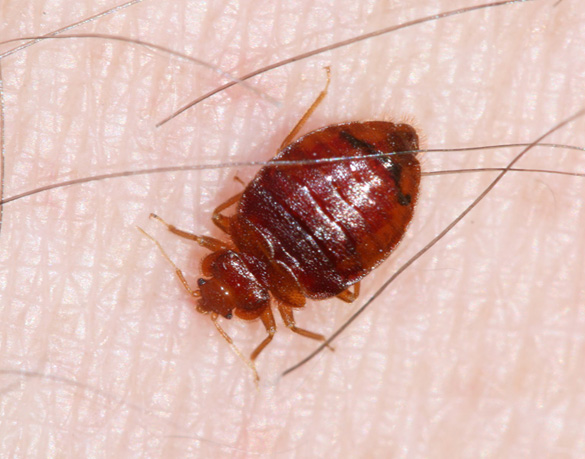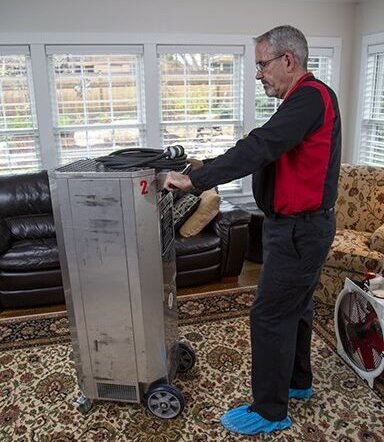Comprehensive Kings Bug Control Services Cincinnati OH
Comprehensive Kings Bug Control Services Cincinnati OH
Blog Article
Kinds Of Bug Control: Which Approach Is Right for Your Infestation?
When confronted with a bug problem, the choice of a proper approach for parasite control is essential in successfully handling the scenario. From chemical therapies to biological services, there exists a series of methods that can be used to address different types of insects. Each technique includes its own set of benefits and factors to consider, making the decision-making procedure a nuanced one. Understanding the subtleties of each technique and examining their compatibility with the details parasite problem at hand is necessary for accomplishing long-lasting success in bug administration. By checking out the different sorts of insect control methods available, people can make enlightened choices tailored to their distinct situations, guaranteeing a more lasting and reliable end result in parasite elimination.
Chemical Insect Control
Chemical parasite control includes making use of synthetic or normally obtained chemicals to take care of and remove pest populations successfully. This technique is commonly made use of in agriculture, forestry, and property settings to deal with a wide variety of pests, consisting of weeds, rats, and pests. Making use of chemical pesticides can supply quick and targeted options to pest problems, making it a popular option for many individuals and services.
Among the essential benefits of chemical parasite control is its ability to quickly remove pests, decreasing the threat of damages to crops, building, and human health. By utilizing details chemicals that target particular insects, this technique can successfully regulate infestations while reducing damage to helpful microorganisms and the environment when applied correctly.
However, making use of chemical insect control also raises issues regarding prospective negative results on non-target varieties, water resources, and human wellness. It is critical to follow safety guidelines, apply chemicals sensibly, and consider different parasite control approaches to decrease these threats and make certain lasting parasite monitoring practices.
Organic Insect Control
Organic parasite control, additionally referred to as biocontrol, makes use of living microorganisms to decrease and manage pest populaces normally. This technique takes advantage of the power of nature to manage insects without the need for artificial chemicals. Biocontrol can entail the introduction of natural adversaries of the parasite types, such as microorganisms, predators, or bloodsuckers, to suppress parasite populations. By using the parasite's all-natural predators or pathogens, organic insect control offers a eco friendly and lasting solution to pest monitoring.

Mechanical Parasite Control
Making use of physical and hand-operated approaches to handle bug populations, mechanical insect control provides an alternative method that does not rely upon using living organisms or artificial chemicals. This approach includes making use of barriers, catches, or various other gadgets to physically deter or eliminate parasites. By obstructing bug entry points or establishing up catches to catch them, mechanical pest control can properly lower invasions without introducing chemicals right into the atmosphere.
One common instance of mechanical bug control is using mesh screens on home windows and doors to avoid pests from going into buildings. This straightforward yet efficient method acts as a physical obstacle, keeping parasites out while permitting proper air flow. Additionally, tools like mousetraps, fly swatters, and ultrasonic repellents fall under the mechanical parasite control classification.
While mechanical pest control approaches can be labor-intensive and require normal tracking and upkeep, they provide a ecologically friendly and lasting solution for handling pest invasions. By combining various mechanical techniques, homeowner can develop an extensive Find Out More parasite control technique that decreases reliance on chemical pesticides.
Physical Bug Control

Some typical physical insect control methods include making use of obstacles such as displays or internet to prevent pest access, catches to catch and remove pests, and hand-picking to literally get rid of bugs from plants or structures. Additionally, techniques like warmth carpenter ants treatments can be used to control parasites like bed insects by raising the temperature level to degrees that are deadly to the insects.
Physical parasite control is especially helpful in incorporated bug administration (IPM) strategies, where numerous bug control methods are incorporated for effective bug management while reducing using chemicals. By utilizing physical pest control strategies, people can efficiently deal with pest problems with very little ecological impact.
Integrated Parasite Administration
When implementing physical pest control approaches as component of bug monitoring approaches, Integrated Bug Management (IPM) arises as a detailed approach that leverages different techniques to successfully regulate pest populations. IPM concentrates on long-term avoidance of bugs through a combination of biological, cultural, physical, and chemical tools customized to particular parasite issues. By integrating numerous control tactics, IPM aims to decrease the risks connected with parasites while also minimizing dependence on chemical solutions.
One key element of IPM is the focus on surveillance and evaluating pest populations to establish one of the most appropriate control techniques. This positive strategy permits for early intervention and targeted techniques, causing extra efficient pest management. Furthermore, IPM promotes ecologically pleasant techniques by focusing on non-chemical control approaches and just making use of chemicals as a last hotel.
Final Thought

By making use of the pest's natural killers or pathogens, biological bug control supplies a environmentally pleasant and lasting option to pest monitoring. - Kings cincinnati pest control
Utilizing hand-operated and physical approaches to take care of pest populations, mechanical insect control provides an alternate technique that does not count on the usage of living microorganisms or artificial chemicals.A this hyperlink reliable strategy to managing bug populations without relying on chemical or organic approaches entails the usage of physical bug control methods.When applying physical insect control methods as component of pest monitoring methods, Integrated Parasite Administration (IPM) arises as a thorough strategy that leverages numerous strategies to properly manage pest populations. Chemical insect control involves the use of chemicals, organic bug control uses natural killers, mechanical parasite control includes physical barriers, physical pest control consists of capturing or eliminating insects, and integrated pest management incorporates several techniques for a holistic strategy to pest control.
Report this page